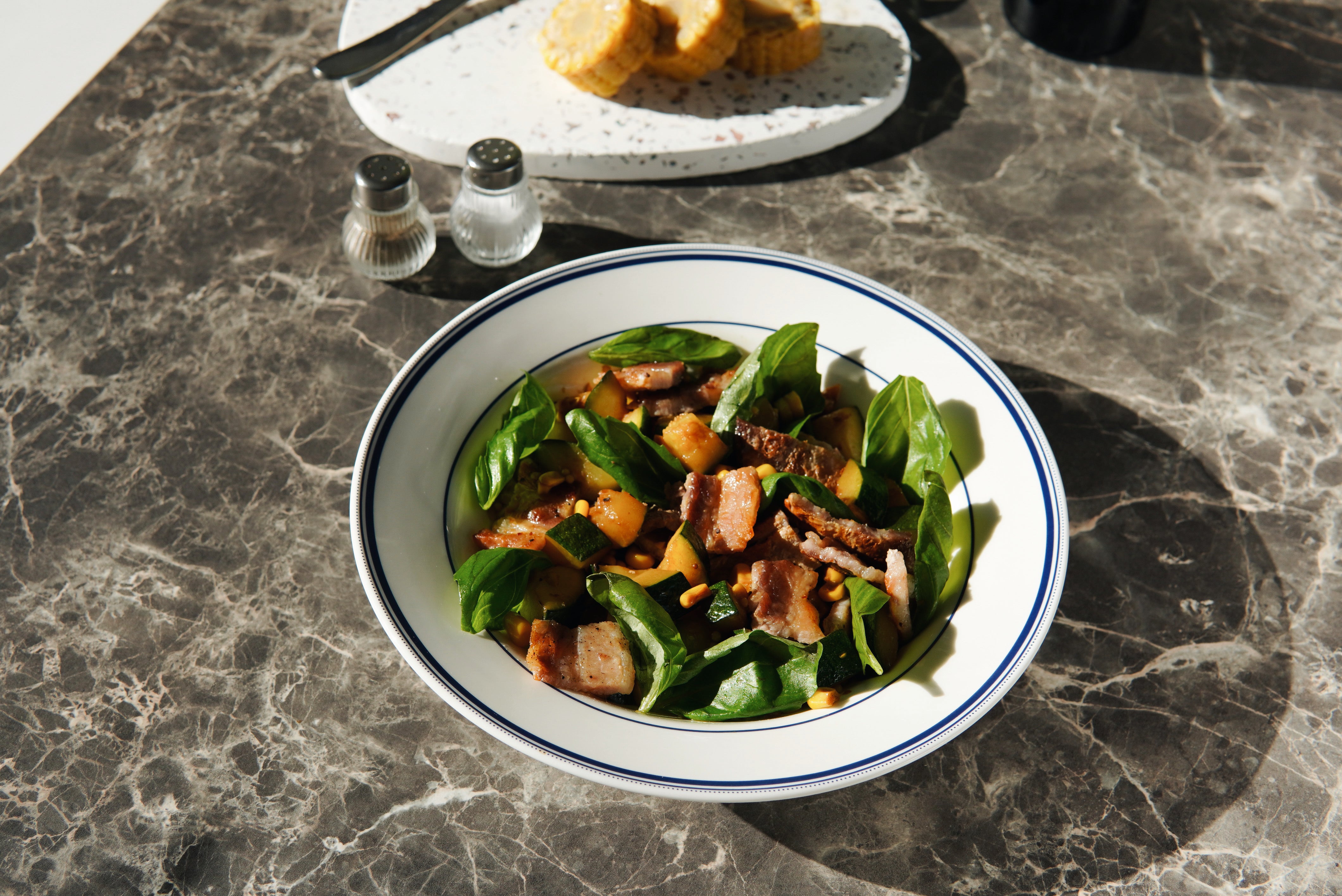Introduction to Olive Oil Tasting
Welcome to the fascinating world of olive oil tasting. This craft, a blend of art and science, unveils a rich tapestry of flavors waiting to be discovered by curious taste buds. Think you simply sip and swallow? That's where you're mistaken! The act of olive oil tasting is a ritual, with rules and techniques designed to tease out the most elusive notes and aromas. Just as a sommelier savors a fine wine, an olive oil enthusiast appreciates the liquid gold for its nuances. Embrace this beginner's guide and unlock the full spectrum of benefits, from enhancing your culinary creations to nurturing your health.
How to Taste Olive Oil
Ready to become an olive oil connoisseur? Here's how to taste olive oil with finesse and precision:
- Selecting the Olive Oils for Tasting: Your tasting journey begins with a well-rounded selection of oils. Aim to include oils from various regions and olives, which allows you to distinguish between unique flavor profiles. A diverse selection paves the way for a more enriching tasting experience.
- Choosing the Appropriate Tasting Vessel: Professional tasters often use blue glass cups or opaque glasses that hide the color of the oil, ensuring unbiased judgment. If you don't have these at home, a wine glass will do just fine!
- Pouring and Warming up the Olive Oil: Pour about one to two tablespoons into your chosen vessel. Warm up the oil by holding the glass in your hand and swirling gently - this releases more of those tantalizing aromas.
- Observing the Viscosity of the Oil: Pay close attention to the oil's thickness or thinness as it coats the sides of your glass. Remember, gentleness is key here; overzealous swirling might lead to spills!
- Inhaling and Noting the Aromas: Uncover your glass and take a deep inhale. Try identifying different notes - is it fruity? Bitter? Pungent? Making mental (or physical) notes aids in building your olive oil vocabulary.
- Assessing Flavors With a Small Sip: Take a small sip, enough to coat your tongue, and savor it for a moment while breathing in through your nose. This technique, known as retronasal perception, can reveal even more flavors!
This step-by-step approach should start building your palate but remember, practicing often is key when learning how to taste olive oil.

Debunking Myths About Olive Oil Taste
Olive oil, the golden nectar of Mediterranean cuisine, is often shrouded in myths and misconceptions. Let's debunk a few of these, shall we?
- Myth #1: The darker the olive oil, the better its flavor. Fact: The color of olive oil doesn't determine its quality or taste. It's simply a reflection of the type of olives used and their maturity.
- Myth #2: Bitter olive oil is bad. Fact: Bitterness is actually a positive attribute! It’s an indication of high polyphenol content - compounds that lend health benefits to olive oil.
- Myth #3: Olive oil shouldn’t be used for frying. Fact: Contrary to popular belief, olive oil has a high smoke point and is actually quite suitable for most types of cooking, including frying.
Don't let these common myths about olive oil taste deceive you. Knowledge is power, and understanding these truths can enhance your appreciation for this liquid gold.
Selecting Olive Oils for Tasting
Embarking on the olive oil tasting journey? Diversification is your magic word. Opt for oils hailing from different regions and made from distinct olives. This strategy unfolds a world of diverse olive oil flavors, allowing you to decipher differences and refine your palate.
Consider sampling oils across the olive oil categories, from virgin to extra virgin selections. Each category offers its unique flavor profile and richness. Also, dive into the world of single varietal oils, where each olive type bestows its characteristic taste and aroma.
Stay curious and remember, every bottle of olive oil is an adventure waiting to be uncorked!

Choosing the Tasting Vessel
The tasting vessel plays a pivotal role in genuine olive oil tasting. It's not merely about sipping from any glass, but selecting the right one. Professionals often reach for special blue glass cups that mimic votive candle holders. Why blue? The color disguises the true color of the olive oil, eliminating unconscious bias during tasting.
- Opt for a blue glass cup or an opaque glass.
- Disguise the color of the olive oil to taste without preconceived notions.
The choice of vessel creates an unbiased environment, allowing your senses to encounter the pure essence of the olive oil without visual interference. So, before you embark on this voyage of flavors, make sure you have your ideal tasting vessel at hand!
Pouring and Warming up the Olive Oil
Tasting olive oil begins with pouring correctly. Start by adding one to two tablespoons of your chosen oil into your tasting vessel. This amount is just enough to cover your palate without overwhelming it.
Now, let's unlock those hidden olive oil aromas! Encase the vessel in the warmth of your palm, and let the heat do its magic. The temperature rise amplifies the oil’s aroma, transforming it from a mere whisper into a symphony of scents.
But wait, there's more! Add a dash of theatrics by gently swirling the glass around. This coats the sides with a thin film of oil, further enhancing the release of aromas and setting the stage for an olfactory feast!
While you're navigating through this aromatic journey, you might start wondering about different types of olive oils and their unique characteristics. If so, don't hesitate to delve deeper and unravel the complexities of these liquid golds.
Next up: observing viscosity - a key step that can reveal surprising insights about your olive oil!
Observing the Viscosity of the Oil
To truly understand and appreciate the essence of olive oil, one must pay attention to the viscosity of the oil. As you tilt your glass, observe the oil as it flows down the sides. Does it trickle like a slow-moving stream or does it rush down like a waterfall? Thicker oils might suggest a fuller body, while thinner ones might indicate a lighter touch on your palate.
But remember, this is not an invitation for vigorous swirling. Excessive movement could cause spills, taking away from your tasting experience. Instead, handle your glass with finesse and subtlety. The art of olive oil tasting lies not just in savoring its flavors but also in appreciating its visual appeal.
So, take a moment. Breathe in. Look closely. You're not just observing an oil; you're witnessing a symphony of senses coming together in harmony.
Inhaling and Noting the Aromas
Now comes the moment of truth. You cautiously lift the glass to your nose, gently removing your hand from its cover. As you inhale deeply, a world of scents envelops you, the smell of olive oil revealing secrets about its origins.
The aroma may be reminiscent of a Mediterranean grove, brimming with ripening olives, or a rustic kitchen where fresh bread is being made. Take note of what it smells like. Is it fruity? Bitter? Perhaps even pungent? Each olive oil aroma is unique and tells a different story about its creation.
As you navigate through this sensory journey, remember that there's no right or wrong way to describe what you smell. Your personal experience is what matters most in this intricate art of olive oil tasting.
Assessing Flavors with a Small Sip
The real magic happens when you take that first small, deliberate sip. As the taste of olive oil dances on your palate, take a moment to savor and assess. Are there hints of grass or green fruit? Maybe a touch of bitterness? A peppery finish perhaps? Your palate holds the key to unlocking the subtle nuances of each unique olive oil.

Pairing Olive Oil with Food
Unleashing the full potential of olive oil goes beyond tasting; it's about pairing olive oil with food in a way that escalates the culinary experience. The secret to perfect pairing? Contrasting or complementing flavors.
With robust dishes, try strong, bitter, and pungent oils. They can stand up to the flavors without getting lost. For delicate dishes such as fish or vegetables, a mild fruity olive oil is your best bet; it enhances without overpowering.
Ever thought of drizzling olive oil on desserts? A daring yet delightful choice! Fruity olive oils paired with sweet treats like vanilla ice cream creates an unexpected harmony.
Remember, there's no definitive handbook for pairing - it's all about playing around with flavors and finding what tickles your palate!
Hosting Your Own Olive Oil Tasting Party
Plan an event to remember, an olive oil tasting party that will leave guests in awe. Start by selecting a variety of olive oils from different regions, each offering unique flavor profiles. Arrange your chosen oils on a table, paired with corresponding tasting notes and details about their origin.
Equip your guests with appropriate tasting vessels - blue glass cups or opaque glasses. Provide ample bread for dipping and palate cleansers like sparkling water and Granny Smith apples.
To add a fun twist, consider making it a blind tasting. Cover the labels and challenge your guests to guess the region or type of olives used. As the host, guide your attendees through the tasting process, encouraging them to notice viscosity, inhale aromas, and assess flavors.
And remember — it's not just about the oil. Enhance the ambiance with fitting music and decorations. With these steps, you're well on your way to hosting an unforgettable olive oil tasting party

Conclusion: Enhancing Your Olive Oil Tasting Experience
Olive oil, often referred to as liquid gold due to its rich flavors and numerous health benefits, demands a certain level of appreciation. Its complexity and variety make it a fascinating subject for sensory analysis.
Sensory analysis isn't just for the professionals. Anyone can learn to discern the subtle variations in olive oil quality. It's all about training your senses to identify the nuances in flavor, aroma, and texture. Think of it as a fun, intriguing journey towards becoming an olive oil connoisseur.
"The art of olive oil tasting is not about perfection but about enhancing your sensory experiences."
Developing your palate involves recognizing various flavor profiles - from fruity to bitter, pungent to sweet. Each olive oil has its unique character, shaped by factors such as the type of olives used, the region they were grown in, and the extraction process.
By embracing this art and science of tasting, you'll be able to appreciate the true essence of each drop of olive oil and unlock a whole new world of culinary possibilities. So go ahead. Keep tasting. Keep exploring.
Experience Selo Croatian Olive Oil
Ready for an olive oil experience like no other? Selo Croatian Olive Oil is calling your name. Unique in its quality and flavor, this radiant elixir offers a journey through the verdant olive groves of Croatia with every drop.
"Selo Olive Oil is more than just an oil; it's an invitation to the dance of flavors."
With each tasting, you’ll uncover vibrant notes that set this olive oil apart from the rest. The artistry lies in its production, where time-honored traditions meet cutting-edge techniques to yield a product that's truly exceptional.
But don't take our word for it! We invite you to purchase Selo Croatian olive oil and embark on your own sensory exploration. Let your palate delve into the rich tapestry of flavors and unlock the secrets held within each drop.
Witness firsthand how understanding the intricacies of olive oil can elevate your culinary creations and even contribute to a healthful lifestyle, as demonstrated by the potential benefits for muscle building.
The world of olive oil tasting awaits — are you ready to dive in?

